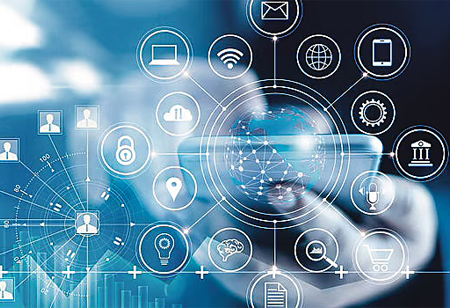THANK YOU FOR SUBSCRIBING
Be first to read the latest tech news, Industry Leader's Insights, and CIO interviews of medium and large enterprises exclusively from Gov CIO Outlook
THANK YOU FOR SUBSCRIBING

By
Government CIO Outlook | Tuesday, March 16, 2021
Stay ahead of the industry with exclusive feature stories on the top companies, expert insights and the latest news delivered straight to your inbox. Subscribe today.
IoT generates a large amount of big data. Opening up a significant volume of data to the public has the potential to increase transparency and accountability.
FREMONT, CA: IoT works by using devices to exchange data and taking action based on that data. There can also be occasions where a group of devices cooperates with a shared purpose and interacts over the internet. There are several situations in which IoT can offer strategic, tactical, and operational benefits to management by designing applications to exploit the data gathered by these devices, such as:
• Identifying evacuation areas in the case of potential natural disasters such as storms, flooding, and so on.
• Operational planning at times of traffic congestion, as well as assisting the government with the planning of new routes.
• Wireless sensors mounted in concrete base piles are used to track loads.
• During cycling or driving, accelerometers may be used to locate possible potholes.
[vendor_logo_first]• Mid- and long-term preparation to evaluate health and safety interventions as well as environmental issues like air quality estimation and noise estimation.
• Road management: Heavy vehicle movement damages the road. The installation of a network of weight-monitoring sensors for heavy vehicles could help prevent road damage.
IoT generates a large amount of big data. Opening up a significant volume of data to the public has the potential to increase transparency and accountability. Citizens and companies can use the data to self-serve, ensure adequate oversight, reduce labor and fraud costs, automate security, and increase process performance.
The IoT architecture can be broken down into three layers:
Perception Layer: RFID tag and reader, camera, GPS, all types of sensors, sensor network, Machine-to-Machine (M2M) terminals, and sensor gate (gateway) are all part of the perception layer. The perception layer's primary purpose is to interpret and classify objects as well as to collect data.
Network Layer: This layer is a convergent network made up of all forms of networking networks and the internet. The network layer should be able to operate networks and be able to operate information.
Application Layer: Application systems are based on the application layer. Data obtained from different devices is converged, converted, and evaluated to provide platform users with appropriate support. This layer provides user devices with relevant interfacing support.
I agree We use cookies on this website to enhance your user experience. By clicking any link on this page you are giving your consent for us to set cookies. More info

However, if you would like to share the information in this article, you may use the link below:
www.govciooutlookapac.com/news/iot-in-egovernance-nid-1263.html



